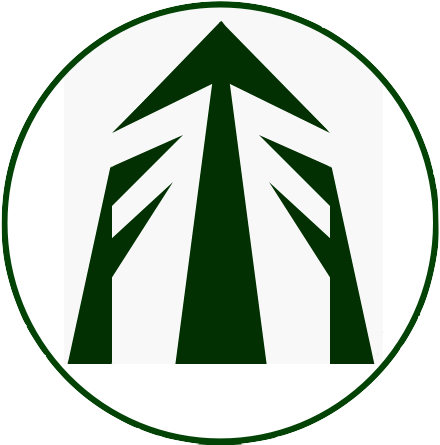Structural Grades
Please acknowledge the contributions made by our producers that allowed these stresses to be available, by considering their products or services:
Ruapehu Sawmills
Mac Direct
TimberWorks
Laurie Forestry
Lumber Processors
Plankville
Cypress sawmill
Research outputs: Farm Forestry Timbers have determined the Characteristic Stresses of No. 1 Structural grade for the following species:
These species can be used for structural applications under the building code using NZS 3603, by involving an engineer in the design. Look for an engineer in the Marketplace
Characteristic values from test results:
| Species | Bending Stiffness MOEj (GPa) |
Bending Strength MoRj (MPa) |
Tension Strength (MPa) |
Shear Strength (MPa) |
Compression Strength (MPa) |
|---|---|---|---|---|---|
| Farm totara | 7.39 | 20.5 | 10.63 | 4.43 | 30.19 |
| Lusitanica cypress | 9.09 | 27.16 | 9.64 | 3.56 | 19.54 |
| Lawson cypress | 8.54 | 29.70 | 13.86 | 3.39 | 23.36 |
| Macrocarpa | 6.08 | 16.09 | 5.76 | 2.67 | 23.90 |
| Redwood | 5.48 | 11.55 | 4.89 | 1.38 | 16.64 |
All Grades:
Structural timber shall be dry to 18% moisture or below.
Species meeting durability performance requirements set out in NZS 3602 for structural grades:
Cypress species including Macrocarpa, Lusitanica, Lawsons and Leyland cypress.
Larch (Characteristic stresses are not available for this species)
No. 1 Structural grade rules
Distortion
- Bow maximum 40/1
- Crook maximum 200/1
- Twist minimal
- Cup 75/1
Knots, holes, voids, bark-inclusion, bark-pockets, resin pockets, pith, decay, wane, skip, sloping grain that exceeds 1 in 10 (including sloping grain surrounding spike knots: Sloping grain surrounding spike knots, being a significant weakness causing defect, must be taken into account when determining the cross section of the spike knot.) and other weakness-causing defect:
- Not more than 1/3 of cross section in combination up to 150 mm board;
- Not more than 1/4 of cross section in combination for larger than 150 mm board.
No voids ["Voids" include holes, bark-pockets, resin pockets and bark inclusion] longer than the width of the face of the piece. Where bark inclusion and associated voids do not exceed 5% of the cross section the length is not restricted.
Checks are not restricted.
Pith includes surrounding wood to a radius of 10 mm.
Wane and skip are to be kept to a minimum. No more than 5% of cross section.
Splits not allowed. Shakes not allowed.
Maximum sloping grain: 1 in 10
Spike knots: The length of the longest edge [i.e. as seen on the face of the piece and where adjacent sloping grain is greater than 1 in 10] of a spike knot must not be greater than 75% of the width of the face of the piece. Where structural members are of square cross section this does not apply.
Sapwood shall be treated to h1.2.
No. 2 framing grade rules
For use in non-loadbearing situations
Distortion
- Bow maximum 40/1
- Crook maximum 200/1
- Twist minimal
- Cup 75/1
Knots, holes, voids, bark-inclusion, bark-pockets, resin pockets, pith, decay, wane, sloping grain greater than 1/6 and other weakness-causing defect:
- Not more than 1/3rd of cross section in combination.
No voids longer than double the width of the board.
Checks, collapse are not restricted.
Wane and skip No more than 10% of cross section.
Visible shakes not allowed
Splits not allowed.
Maximum sloping grain: 1 in 6
General and Responsibilities
At least 95% of the consignment of graded timber shall meet the grade specifications above upon despatch.
For tallying volumes call dimensions shall be used.
| Call sizes (mm) | 25 | 40 | 50 | 75 | 100 | 125 | 150 | 200 | 225 | 250 | 300 |
| Actual dressed dry size (mm) | 19 | 35 | 45 | 70 | 90 | 115 | 140 | 180 | 205 | 230 | 280 |
Once despatched the seller shall not be responsible for any subsequent deterioration of condition of the timber or defects arising from further processing.
Farm Forestry Timbers reserve the right to revise our grading rules without notice. Grade revision 1.0 January 2012.
See Glossary for explanation of terms.
Disclaimer: While every effort is made to ensure the accuracy of the information provided on this site, Farm Forestry Timbers Society do not accept liability for any consequences arising from reliance on the information published. If readers have any doubts about acting on any articles they should seek confirming, professional advice.
 Farm Forestry New Zealand
Farm Forestry New Zealand Farm Forestry Timbers - Headlines
Farm Forestry Timbers - Headlines